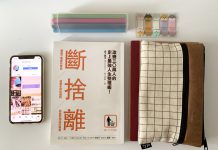Shared memories and old ties help Choi Yuen villagers find ways to build their new home
by Kris Lee And Caleb Ho
Many people in Hong Kong dream of a good salary and a comfortable flat in the city. These are among the goals that drive them as they commute to work every morning.
No doubt, the residents of Tin Shui Wai in the northern New Territories share similar ambitions as they rush to offices in Kowloon and Hong Kong. Not so Fancy Fung Yu-chuk who farms 30,000 square feet of land in Pat Heung, Yuen Long and follows the time-honoured cycle: plough, sow, water, weed, feed and harvest. Then she delivers the produce to customers by bike.
Fung was born and grew up in Choi Yuen Village, which was demolished in May last year to make way for the Hong Kong section of the Guangzhou-Shenzhen-Hong Kong Express Rail Link. Some 500 people in 150 households were forced to move despite staunch protests.
Some of them decided to build a new Choi Yuen Village and since May last year, they have been creating an organic farm on rented land near the site of the new village. The farm, which they have named Pioneer Field, is jointly owned by some of these villagers and a few non-villagers.
Fung’s home may be gone, but her attachment to the old village, to the land and to the people, has not diminished.
“Shek Kong Airfield and Shek Kong Military Field used to be our playground. We let our cattle out to pasture there and ran around with bare feet. This is what differentiates us from children who grew up in the city, they never had these experiences,” Fung says.
Although she has moved to Tin Shui Wai, she still comes to the new village to farm and to see her old friends and neighbours. “My homeland has been demolished now, where else could I go?”
Fung Kit-chun is one of the villagers who decided to move to the new village, which is about a 15 minute drive away from the original one. But she did so with a heavy heart.
“In the first few months after I moved here, I did not return to the old village, I was afraid that I could not control my temper,” says 51-year-old Fung.
The old family house, now demolished, meant a lot to her. Her widowed mother had worked hard on the land and raised livestock so she could build that house and to raise her three children. After her mother passed away, Fung still felt connected to her through the house and her grave.
“It was only a 15-minute walk to go to my parents’ graves. Although they were gone, I still felt close to them,” says Fung. “I eventually understood the importance of keeping our roots.”
The villagers’ determination to resist the eviction and devotion to their homeland brought them admirers in some quarters and critics in others. Their critics regarded them as stubborn, stick-in-the-mud types or thought they were just greedily hanging on so they could demand large sums in compensation.
Fung Yu-chuk stresses that compensation was never what the villagers wanted. “We asked the government not to demolish our homes from the very beginning. We did not want their compensation,” says Fung. “It’s actually a hardship for villagers to spend years rebuilding their homes. It causes suffering which is overlooked by outsiders.”
Mrs Tsang, who does not want to give her full name, moved to the old Choi Yuen Village as a young bride. Her determination to protect her home of 45 years drove her to take part in the demonstrations against the demolition of the village. “I had never been to places like the Government headquarters and the Legislative Council,” says Tsang. “But to save our homes, I had to go even at my age; there were no other methods.”
Despite their opposition, the Legislative Council’s approval of funding for the railway project in January 2010 meant the writing was on the wall. Villagers accepted the compensation plan offered by the government on the condition that the government would help them to reestablish a new agricultural community under the Agricultural Land Rehabilitation Scheme.
Building a new village does not simply mean moving households to a new site with new homes. It involves numerous processes, each of which can take months. There are tasks like applying for farming licenses and looking for land to build on and to farm. After 10 months hunting, villagers spent HK$18 million of their compensation money to purchase 145,000 square feet (1.3 hectares) in Yuen Kong San Tsuen in December 2010.
Initially, 89 out of 150 affected families agreed to take part in the reconstruction. But as a result of delays and red-tape, only 47 households persevered and will move to the new village.
The construction work had been expected to start early this year, but unresolved problems like time-consuming procedures to get approval for construction and a poor sewage disposal system, means the date keeps getting pushed back.
Building has yet to start and villagers are still living in temporary prefabricated houses in the new Choi Yuen Village built by the MTRC.
“Now I am like a refugee,” Fung Kit-chun moans. Like other villagers, she did not expect to be living in a temporary house for a long time, which is doomed to last even longer.
Fung had planned to spend the rest of her life in her old house. She thought she would not suffer from flooding again after the completion of a drainage system nearby and she spent tens of thousands of dollars on renovations before the government told her to move in 2008.
“I miss my kitchen the most,” Fung says, pointing at a photo of her and her sister in the spacious well-equipped kitchen. She smiles bitterly when looking back at the small kitchen in her temporary house.
Villagers say living in the two-storey temporary houses made of iron sheets can be like a form of torture that eats up people’s strength. There is often a huge difference between the internal and external temperature. In the summer, it is much hotter inside the house than outside, and in winter the situation is reversed.
They complain the houses are of shoddy quality. Rainwater seeps in from cracks and the metal rusts. The house is not soundproofed and Tsang says that on the ground floor you can hear a pin drop upstairs.
Tsang says the compensation she received is inadequate even to cover the construction cost of her new house, which is around HK$700,000. “Only indigenous villagers receive a lot of compensation but not us, the non-indigenous ones,” she says.
Most villagers are classified as non-indigenous residents and they only received compensation ranging from HK$300,000 to HK$600,000. This meant they had to pool their resources to buy the land for Pioneer Field and then build new houses and public facilities in the new village. Many have had to dig into their savings and any increases in construction costs may derail the plans of those who received lower amounts of compensation.
Currently, 37 out of the 47 households who will build houses in the new village are living in the temporary houses. The remaining 10 households have to live outside the village due to a lack of space.
Villager Wong Ping-yuen is one of them. If everything goes according to schedule, the 55-year-old will move into his new house next September. In the meantime, Wong, who is one of the owners of Pioneer Field travels to the new village from Tin Shui Wai every day to farm and socialise.
After working and living in the city for a while, Wong chose to return to Choi Yuen Village after he retired in 2008 because he found city life boring. “It is more comfortable living here, where all villagers are friendly with each other,” says Wong. “It’s not like living in those buildings where no one ever talks to you. You do not even know the surnames of the people living next to you.” Wong much prefers farming and talking to other villagers to watching television at his urban home.
If anything, the long struggle to build a new Choi Yuen Village has brought these remaining villagers closer together. Now there is also the opportunity to build something valuable, like a system whereby all the villagers can actively participate in village affairs.
They hold regular meetings every Saturday where everyone can discuss the details of rebuilding the village. Views are solicited through household visits before discussions of complicated agendas. They have agreed on a plan under which 43 per cent of the land will be allocated as communal farm land and public meeting areas, the rest will be used to build houses and public facilities.
Chen Yun-chung, research assistant professor at Hong Kong Baptist University’s Department of Sociology, lives near the new Choi Yuen Village and volunteered to help design the new village. He praises the village for its democracy which does not exist in other villages in Hong Kong.
Chen says this has had a positive impact on villagers, “Making the new village a better place gives villagers a brighter future to look forward to, and that provides them with psychological support to go through all the stress of having their homeland demolished.”
Chan hopes the new village will act as a model and show that organic farming is feasible for other villages. On Saturdays and Sundays, there are organised tours to Choi Yuen Village and the Pioneer Field. Fung Yu-chuk who acts as a tour guide, hopes these events will provide a channel for citizens to know more about the old village and help to sustain the livelihood of the villagers.
“We think there is an alternative. We organise tours, cook food for people, sell hand-made sauces. This is a second economy. We think villagers do not always have to work in towns to earn money,” Fung says.
After years of struggle, some have given up and moved out, some feel exhausted but persist. Perhaps 76-year-old villager Chan Kai-ching, is speaking for most villagers when he says: “[All we want] is a place to live, that’ll be fine. We are not demanding a thousand square feet home.”
“We do not aim high. All we want is a stable home,” he adds, echoing the wishes of Chinese farmers down the millennia.










































